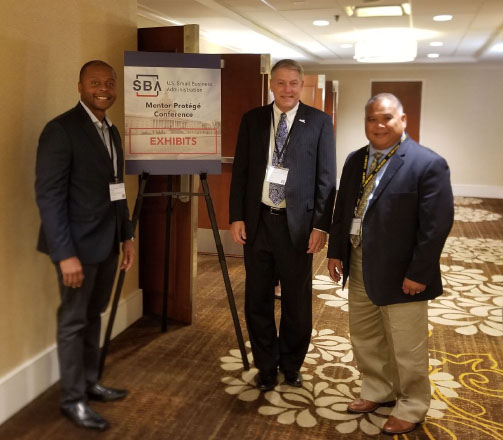

To view the Final Rule, please, click here. The SBA’s commitment to helping these firms better situates them to become successes and improve their environment and economy. economy, small businesses are a crucial part of the marketplace. The Mentor-Protg Program through the SBA is a program in which an other-than-small (read large) business can provide a small business access to its resources, experience and assistance, and in turn the large business can join with the small business to perform small business set-aside contracts.

With their incredible value to their communities and the U.S. The changes within the Final Rule are welcome news to the millions of businesses that are now eligible for participation in the Mentor-Protégé Program. Effective August 24, 2016, it will be available to Service Disabled Veteran-Owned Small Businesses, HUBZones Small Businesses, and Women-Owned Small Businesses, as well as non-disadvantaged Small Business Concerns. The Program, which was previously limited to 8(a) Small Business Concerns, has been expanded.

Recently, the Federal Register published their highly anticipated Final Rule, which includes changes to the Mentor-Protégé Program. economy.”īecoming involved in the SBA’s program can mean the difference between success and failure for a small, struggling firm, and the importance of a mentor to a protégé cannot be overstated. The program’s goal is enhancing the capacity of participants to “be competitive, achieve entrepreneurial success and contribute to the U.S. We eagerly anticipate the issuance of this proposed regulation to consolidate SBA’s two mentor-protege programs, and hopefully SBA will at the same time address some of the other problems with the mentor-protege regulations (such as eliminating the requirement for SBA to approve a joint venture agreement before award of an 8(a) contract).The Small Business Administration’s (SBA) 8(a) Business Development (8(a) BD Mentor-Protégé Program is crafted to enable successful companies to provide “forms of business development assistance” to 8(a) Program Participants. Consolidation of these two program should streamline the mentor-protege approval process, and result in the elimination of duplicative and confusing regulations. This is simply not the case, as the ASMPP provides the same advantages to an 8(a) protege as the 8(a) MPP. While the ASMPP has been around for over a year now, many 8(a) contractors are still under the misconception that they need to be in the 8(a) MPP in order to bid as a joint venture on 8(a) set-asides. While that obviously did not happen, it is not uncommon for SBA (or other agencies) to issue proposed regulations months (or even years) after originally estimated.įor an 8(a) contractor, there is little (or arguably no) benefit to applying to the 8(a) Mentor-Protege Program (8(a) MPP) instead of the All-Small Mentor-Protege Program (ASMPP), and SBA reviews and approves mentor-protege agreements at a much faster rate if one applies to the ASMPP. This rule will also make other revisions in the Government Contracting programs, including the process for approving management changes in entity owned concerns.Īccording to SBA’s regulatory agenda, this proposed rule was estimated for release in March 2018. SBA proposes to consolidate the All Small Mentor Protégé Program and the 8(a) Business Development Mentor Protégé Program into one program. Small Business Administration’s (“SBA”) most recent regulatory agenda included an upcoming proposed regulation entitled “Consolidation of Mentor Protégé Programs and Other Government Contracting Amendments.” Specifically, SBA’s regulatory agenda states that: As we were reviewing the regulatory agendas of various federal agencies for upcoming regulations that might impact federal contractors, we noticed that the U.S.


 0 kommentar(er)
0 kommentar(er)
